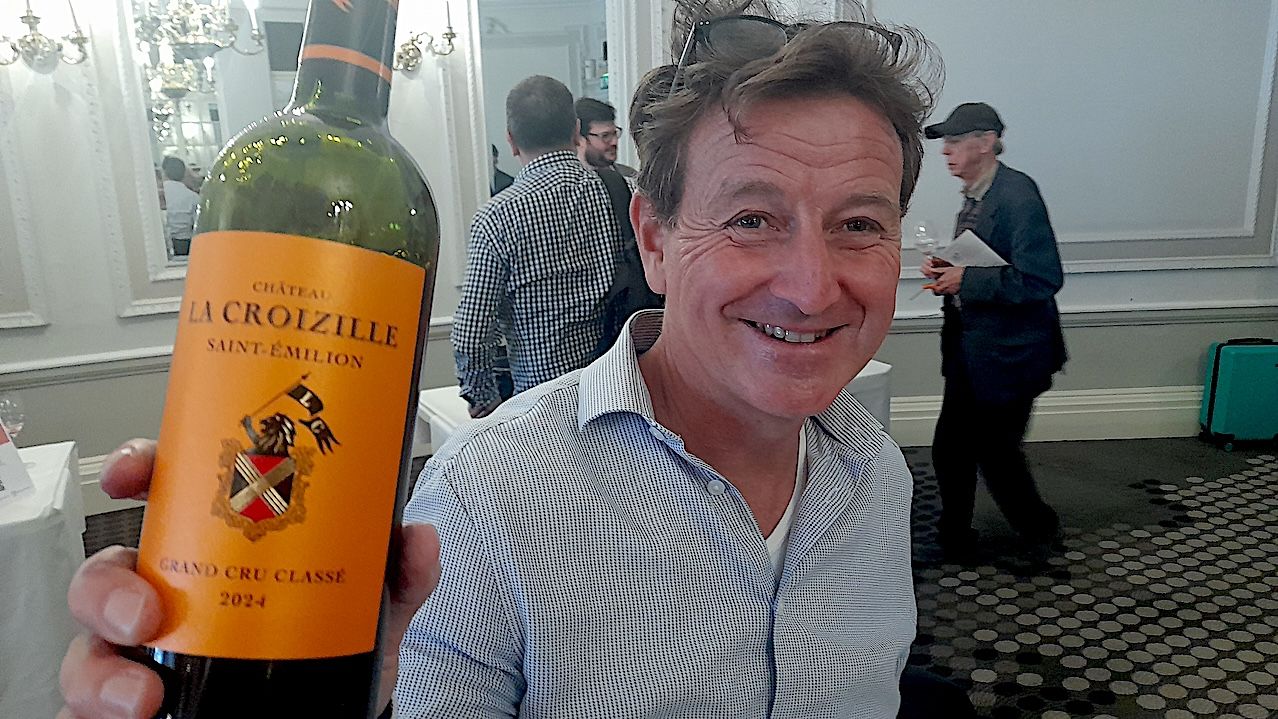“We don’t want to make a vintage every year, but sometimes you have one or two vintages where you have to fight a little bit, and 2013 is exactly that kind of year,” says de Billy.
Hubert de Billy, talking from his office in Epernay, was in an upbeat mood. The fifth generation family member and director at Champagne Pol Roger said that there were two reasons for launching the Pol Roger Vintage 2013 now, the first being that the 2012 was almost all sold: “The first reason is logical, it is the end of the 2012 and after 12 comes 13. Perhaps it has something to do with Covid-19, but sales of Pol Roger are not so bad. More than that, they are good, around the world,” he said. The second reason for launching the vintage – well after the more opulent 2012 – was “that it was the right time for 2013.”
Indeed, de Billy thinks that the 2013 vintage, notably brisk and bright, and in real contrast to 2012, will be “just right” for Italy and France, “while our British customers,” he laughed “will say it is too young. But you can keep the wine longer. The customers for vintage are people who want to keep the wine in their cellars.”
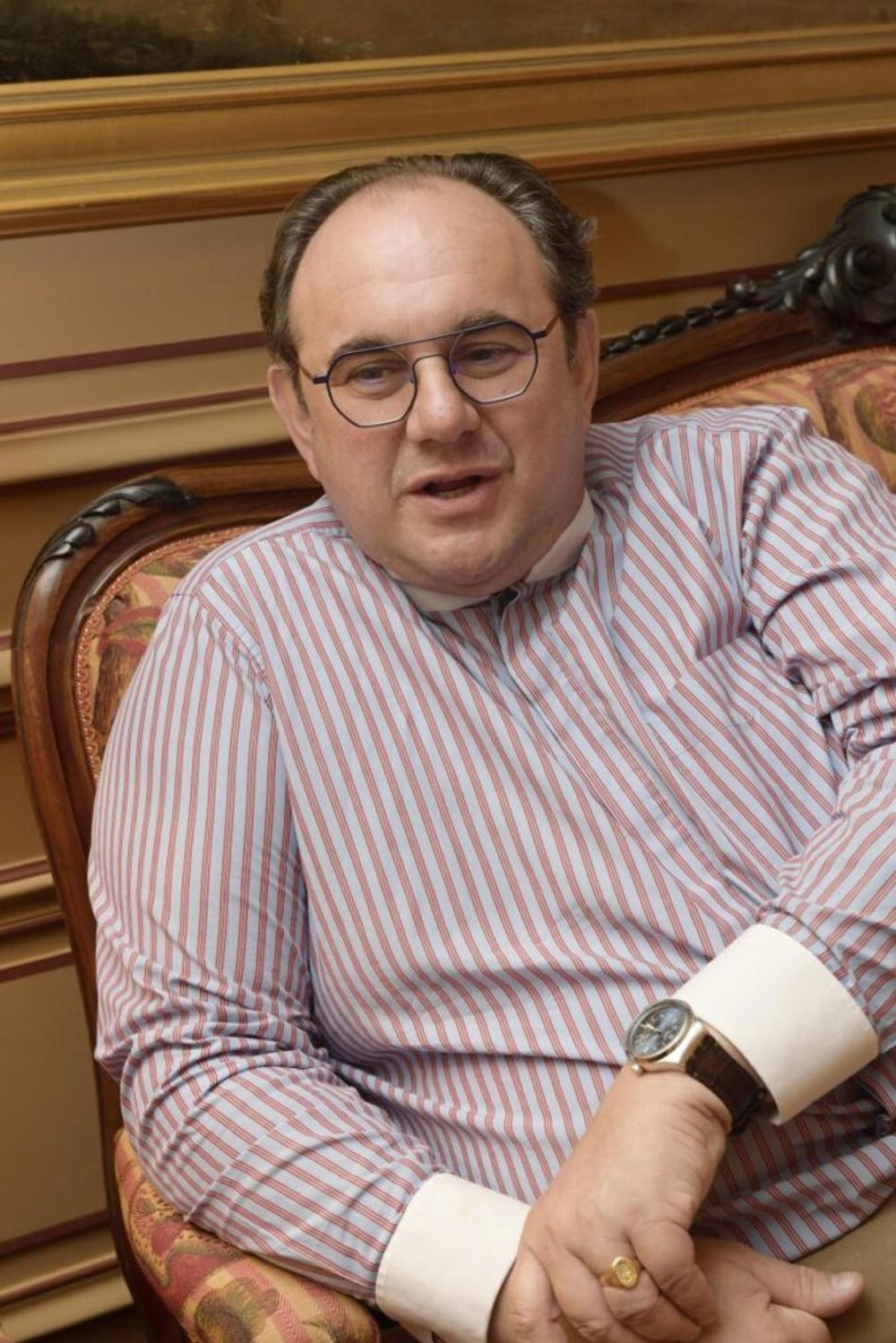
Hubert de Billy: “We sometimes have to fight for our babies.”
As he chats away, and his thoughts carry him, he of course notes the challenges the pandemic has brought and laments that the only really difficult market has been Paris, so very dependent on tourism and luxury travel, with most gastronomic temples closed and, from Monday onwards, a 10pm curfew for restaurants. Then his thoughts turn to Epernay, where some usually outsourced jobs have been brought in-house to keep everyone busy and employed –when there are no visitors to the house and some roles are now less busy. These are jobs like attaching particular stickers to country-specific packaging. De Billy himself might join his team on the labelling line.
“I as owner of the company could say that this isn’t decent work for me, but we will stick stickers. We are all in the same boat and we have to stick together. And I if I work with them, on paper maybe that is less glamorous, but we work together. It is in this kind of turbulence that you can feel, that you can see, that being a family-run company helps.”
Pol Roger is one of the few houses that still riddles its entire production by hand, keeping a dedicated and valued team of riddlers. “We work in the same world as all our competitors,” de Billy notes. “But at the present time we are pleased to do that, our customers and our stockholders accept the extra cost, and so we will continue for as long as we can.”
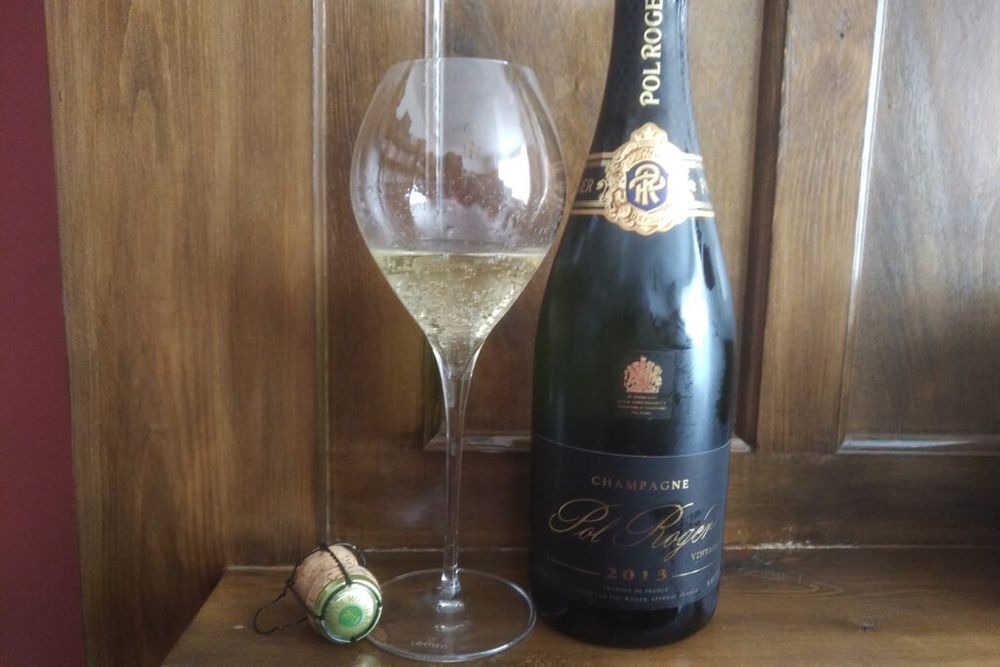
The full story of 2013 as a challenging vintage
Turning to the 2013 vintage, de Billy said: “First of all you must understand that 2013 was a challenging year. 2013 was a difficult year for a lot of different appellations. We used to have a president [Patrice Noyelle, president of the board of directors] who was a Burgundian and he asked me why we had created a vintage in 2013. I said because when you will taste the wine, you will be surprised. Don’t take any decision – taste first and afterwards we will speak. He could not admit that there was so much difference between Burgundy and Champagne.”
De Billy continued: “It is true that during the harvest it was not obvious that 2013 was a vintage. This was decided when we tasted the vins clairs. It is also true, and we need to admit it, a vintage which is not a great vintage in the other appellations is always a bit more difficult to sell. It is still a reality. But I think as winemakers, we sometimes have to fight for our babies. We need to take responsibility and play.”
“My son is an oenologist, I am not and my dad was not, but we describe ourselves as wine designers. When you design a car, you do not need to be a good mechanic. For us it is the same philosophy. Like a great architect needs to fight for his great building: What did the press say when Monsieur Pompidou started in Paris – it was considered the ugliest building in the world. Monsieur and Madame Pompidou were obliged to fight and to help reveal what was inside, what was the message. And for us it is the same, we have to fight for some vintages. We don’t want to make a vintage every year, but sometimes you have one or two vintages where you have to fight a little bit, and 2013 is exactly that kind of year.”
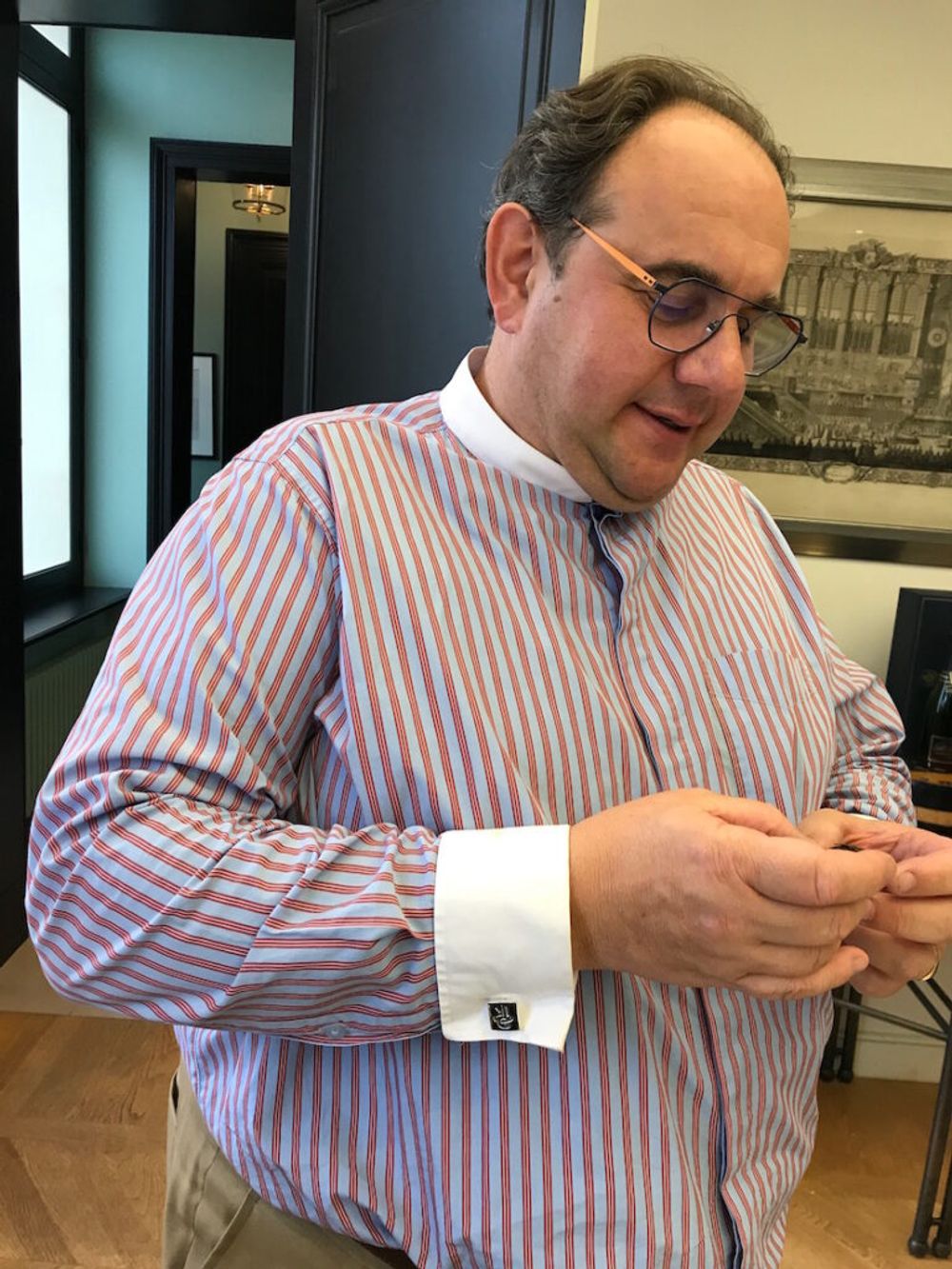
Hubert de Billy, inspecting a cork from one of the ‘lost’ bottles retried from the collapsed cellar. October 2019
All the base wines were fermented in stainless steel. “It is exactly what we are looking for, we want the emphasis on the taste of the grapes,” de Billy said. The wines then went through full malo-lactic fermentation. The assemblage is 60% Pinot Noir, 40% Chardonnay, about 60-70% from premiers crus and the remainder from grands crus. De Billy notes that for both varieties, origins are played off against each other – which beautifully explains the sense of tension in the wine. The Pinot Noir, for instance, comes from Ambonnay, Bouzy, Chigny-les-Roses and Vrigny.
“Chigny will have more body,” de Billy said, “Bouzy will have more elegance, Ambonnay will be in between. Vrigny and Chigny are looking north, whereas Bouzy and Ambonnay are looking east and southeast, so the ripeness is never the same. This gives you a good balance. For Chardonnay there is Chouilly and Vertus, Cramant and Cuis. Cuis hasn’t the same ripeness as Cramant and this gives a little nervosité to the wine. We try to find a balance, it’s our way of dealing with the different crus.”
Tasting the Pol Roger Vintage 2013 Brut
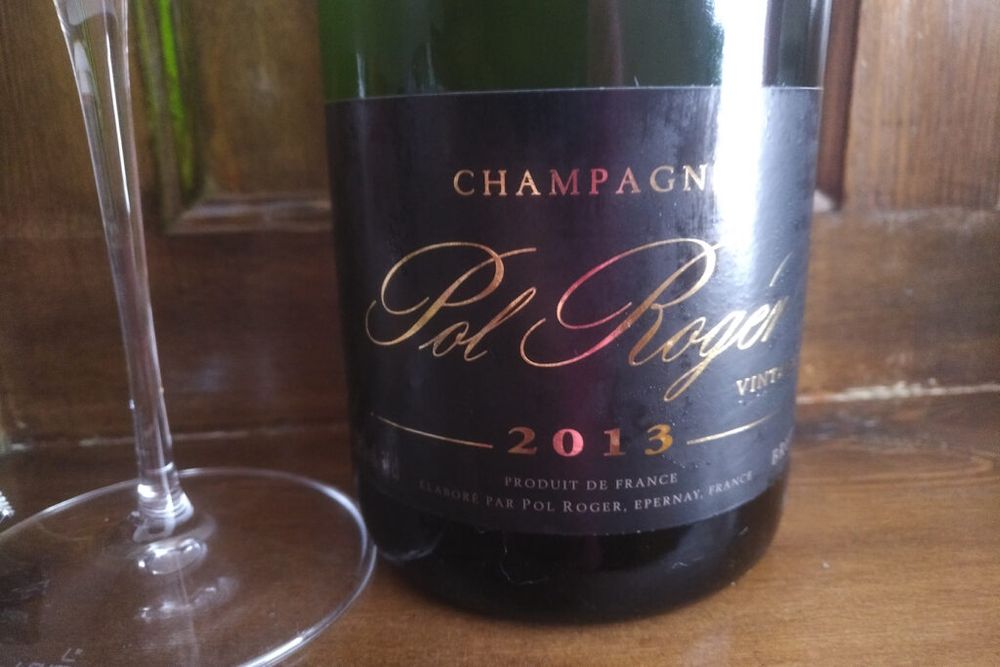
The first notion is of citric, bright freshness and almost of green apple. The second and third sniff then bring a richer notion, very subtle but still, of salted buttery shortbread. The palate is wonderfully taut, vivid with tiny, energetic, fine bubbles that speak of drive and tension. There is something bracing, bright and driven here. With more air and more temperature this mellows into the creamy, tart but smooth flesh of Golden Pearmain apples at the heart while that beautifully statuesque tautness and elegance remains. Where 2012 was generous and obvious, 2013 is reticent and calm. Where 2012 was opulent, 2013 is brisk. Where 2012 was the life and soul of the party, 2013 is contemplative, giving us clean-cut, grown-up charm and a whole world of refreshment.
The 2013 vintage was disgorged in December 2019 with a dosage of 8g/l and has an abv of 12.5% It will be released to the trade on 7 October 2020 and will be available at Berry Bros & Rudd, Corney & Barrow, Justerini & Brooks, Tanners and Woodwinters at an RRP of £80
Pol Roger is imported into the UK by Pol Roger Portfolio, which is a partner of The Buyer. Click here to discover more about the company.

